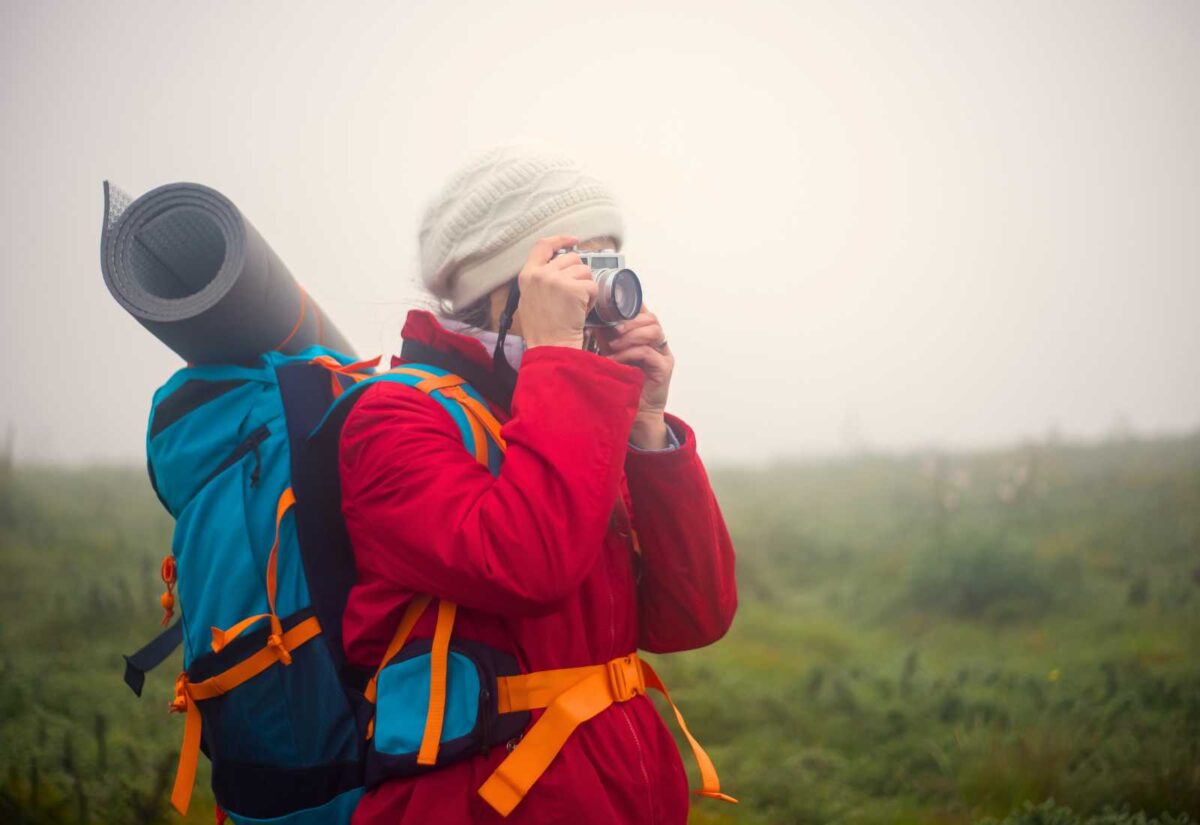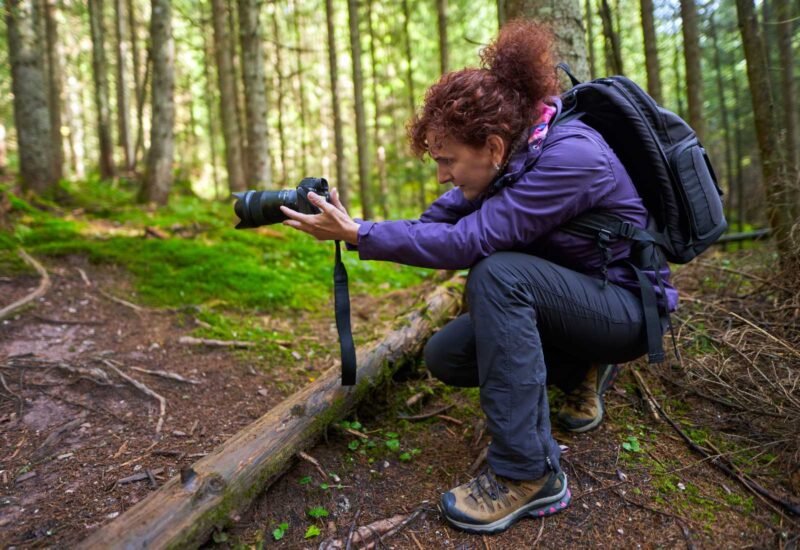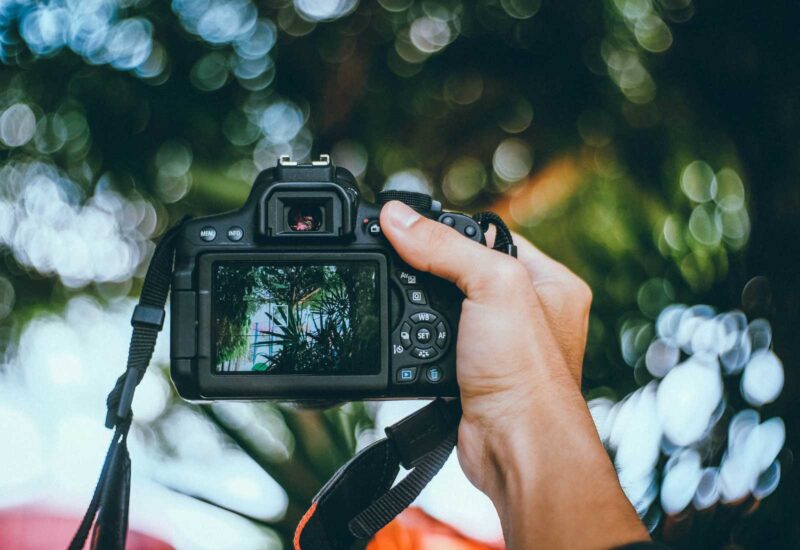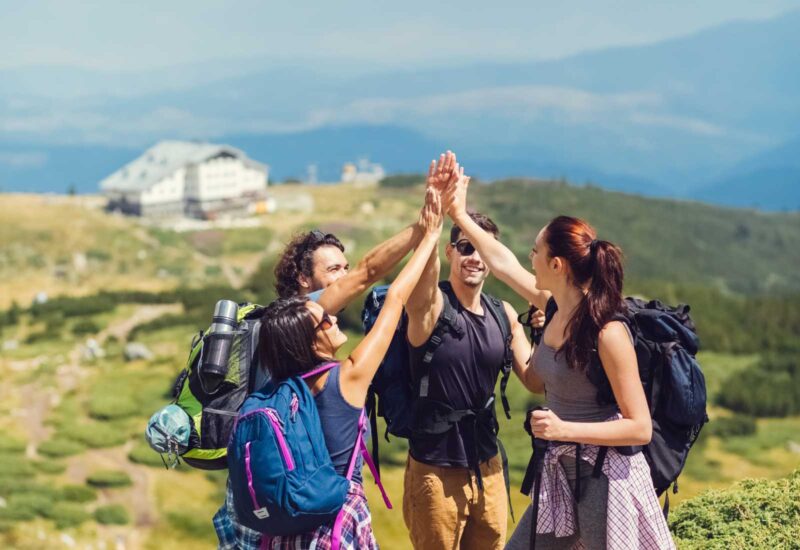The Camino de Santiago is a route full of history, breathtaking scenery and unforgettable moments that offer a wealth of opportunities for photography enthusiasts. Capturing the essence of the Camino in a photograph can be an exciting and rewarding challenge. In this article, we will share tips for photographing the Camino de Santiago and how to capture the best images of this iconic pilgrimage.
Plan and prepare your photographic equipment
To get an excellent result to capture the best pictures on the Camino de Santiago, it is important to plan and prepare your photographic equipment properly: it is important to take into account the quality of the results, but also the extra weight you are going to carry.
So, choose a camera that suits your needs and photographic skills. SLR and mirrorless cameras offer greater control and image quality, while compact cameras and smartphones are lighter and easier to carry.
You can also carry a selection of lenses and photography accessories to suit different situations and lighting conditions. A wide-angle lens is ideal for capturing landscapes and architecture, while a telephoto lens will allow you to get close to distant details and subjects. Don’t forget a lightweight tripod to stabilize your camera in low-light situations. Remember, though, you’re already starting to overload your backpack.
And speaking of backpacks, be sure to bring cases and bags to protect your gear from dust, moisture and shock. It’s also useful to carry a cleaning kit to keep your lenses and sensors in perfect condition.
Take advantage of natural light and weather conditions
The Camino de Santiago offers a variety of weather and light conditions that can influence your photographs, and these conditions are great for creating unique and evocative images.
Two “camera-sucking” times of day are the golden hour and blue hour. The former, at sunrise and sunset, and the latter, just before sunrise and after sunset, offer soft, warm light that enhances colors and creates soft shadows. These moments are ideal for photographing landscapes and scenes with a magical, ethereal ambiance.
Although cloudy days may seem less attractive for photography, they offer even, diffused light that minimizes shadows and enhances details. These days are perfect for photographing architectural details, textures and portraits.
Rain and fog can add a dramatic and mysterious touch to your photographs. Use these conditions to capture reflections in puddles, silhouettes and fog-shrouded landscapes.
Frame and compose your photographs carefully
Composition is key to creating stunning and memorable images on the Camino de Santiago. We can give you some cool tricks that will help you take the best photograph of the Camino.
A staple for any self-respecting photographer is the rule of thirds: divide the scene into a 3×3 grid and place key elements at the intersections or along the lines, as this will help create visual balance and guide the viewer’s eye through the image.
Another classic is to use lines and perspectives to direct focal attention to the main subject or to create a sense of depth and dimension in the image. The lines of paths, fields, and architecture can be useful elements in achieving this effect.
Experimenting with different framing and viewpoints to highlight interesting aspects of the scene and give your photographs a unique focus often works very well. Try low, worm’s-eye angles or high, bird’s-eye angles to create more dynamic, eye-catching images. The latter option offers spectacular images, especially if the photographer also has a drone.
Capture the essence of the Camino de Santiago
Not everything is going to be landscapes and monuments, there are more themes to capture the true essence of the Camino in your photographs.
For example, the most human and emotional moments. You can photograph pilgrims in their moments of joy, tiredness, reflection and camaraderie. These images convey the human and emotional experience of the Camino, connecting the viewer to the story of the pilgrimage.
Also all the symbology and icons of the Camino are a very good option. Pay attention to the details and symbols that define the Camino de Santiago, such as shells, yellow arrows and kilometer markers. These elements can serve as visual metaphors for the pilgrim’s experience and provide context to your images.
And of course, as you pass through different towns, with diverse cultures, you can immortalize local traditions, festivities and customs along the Camino to give a broader view of the cultural and heritage richness of the route. These images can include religious celebrations, folkloric dances and local markets.
Pro level photography: editing and post-production of your photos
Once you have captured your images, you can dedicate time to editing and post-production to improve and perfect your photographs. If you have a graphic design background and know how to use the endless technological tools available, you can create very special images.
For example, you can use editing software such as Adobe Lightroom or Photoshop to adjust exposure, contrast, saturation and white balance, enhancing the colors and atmosphere of your images. Also, experiment with cropping and rotating your photos to improve composition and remove distracting or unnecessary elements. And if you want unique images, apply filters and effects to give a unique and coherent style to your images, evoking the atmosphere and emotions of the Camino de Santiago.
The Camino de Santiago is a paradise with many possibilities for photography lovers, offering countless opportunities to capture magical moments, spectacular landscapes and genuine emotions. By following these tips, you will be able to create stunning and memorable images that reflect the essence and richness of this iconic pilgrimage, and immortalize your Camino de Santiago experience with your best images.









Leave A Comment